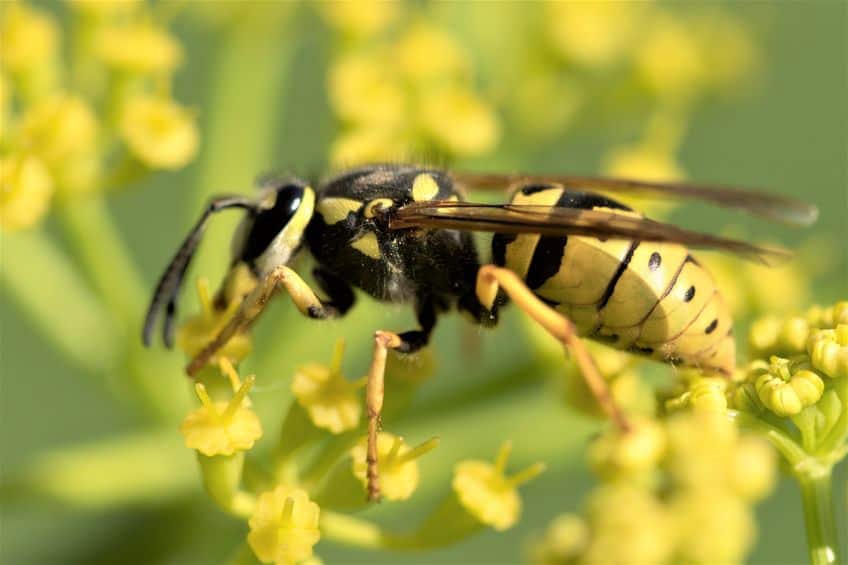Seasoned gardeners know that increased wasp activity is one of the risks of maintaining a garden—and everybody hates wasp bites. Fortunately, you don’t have to give up your garden to get rid of wasps. The best approach here is to understand what parts of your garden draw in wasps.
Flowers and flowering weeds attract wasps because they are crucial food sources for these vespids. Routinely remove all weeds and stray flowers in your garden to control wasp activity. Meanwhile, for flowers you want to keep, fill the nearby holes that wasps might take shelter in with soil.
Are you struggling with wasps in your garden? Keep reading as I discuss the different ways how gardeners and homeowners can effectively control wasp activity and population in their property.
Why Do Flowers and Weeds Attract Wasps?
Nectar is an important food source for wasps, so if you have flowers in your garden, expect them to come swarming in search of nectar. Weeds, on the other hand, don’t necessarily draw in wasps unless they have budding flowers.
Also, don’t assume you can forego pulling flowering weeds and maintaining your garden for even a few days without attracting wasps because they have an excellent sense of smell. No matter how small that flower is, wasps will be able to detect it. Reports even suggest that wasps may go as far as to track down anything that smells even mildly floral, including certain perfumes and food.

How To Control Wasp Activity in Your Garden
Fortunately, there are many tips gardeners can follow to effectively reduce the number of wasps swarming inside their living space. These include:
- Trimming the lawn: On its own, tall grass won’t draw in wasps, but they can attract other types of insects. Since wasps are natural insect predators, they’ll come in droves if they detect that your home is crawling with invertebrates to prey on.
- Getting rid of extra flowers: Get rid of flowers you don’t want in your garden. Remember, the more nectar-producing flowers you keep, the harder it will be to control wasp activity.
- Filling in holes: Inspect the areas around your flowers, pinpoint all holes and burrows, then fill them in with soil. Otherwise, wasps might take shelter inside them.
- Getting rid of scrap meat: The smell of meat draws in wasps. If you and your family love hosting outdoor barbecue parties, make sure to properly dispose of the scrap meat and bones.
Note: Wasps may be annoying pests, but they play a crucial role in the ecosystem. These natural predators help control overall insect activity as they prey on pests such as caterpillars, aphids, and flies. Without them, other pests will swarm your home. Rather than eliminating all wasps in your property, strive to regulate their activity instead.
Final Thoughts
You don’t have to give up your flowers and plants to control wasp activity. Focus on maintaining your yard instead. Remove dirty pools of water, regularly pull out weeds, trim the lawn, and get rid of the trash in your yard.
Also, fix the damaged parts of your home. Cracked walls and rotted wood panels attract not just wasps but also other pests such as termites, hornets, and mosquitoes. Remember, the simplest, most effective way to get rid of any pest is to maintain a clean living space.
